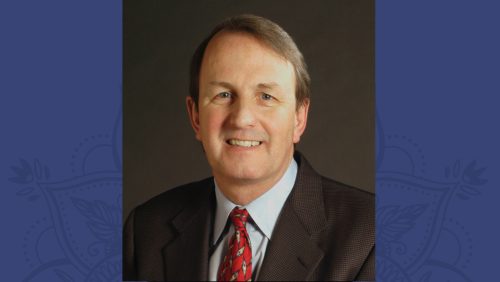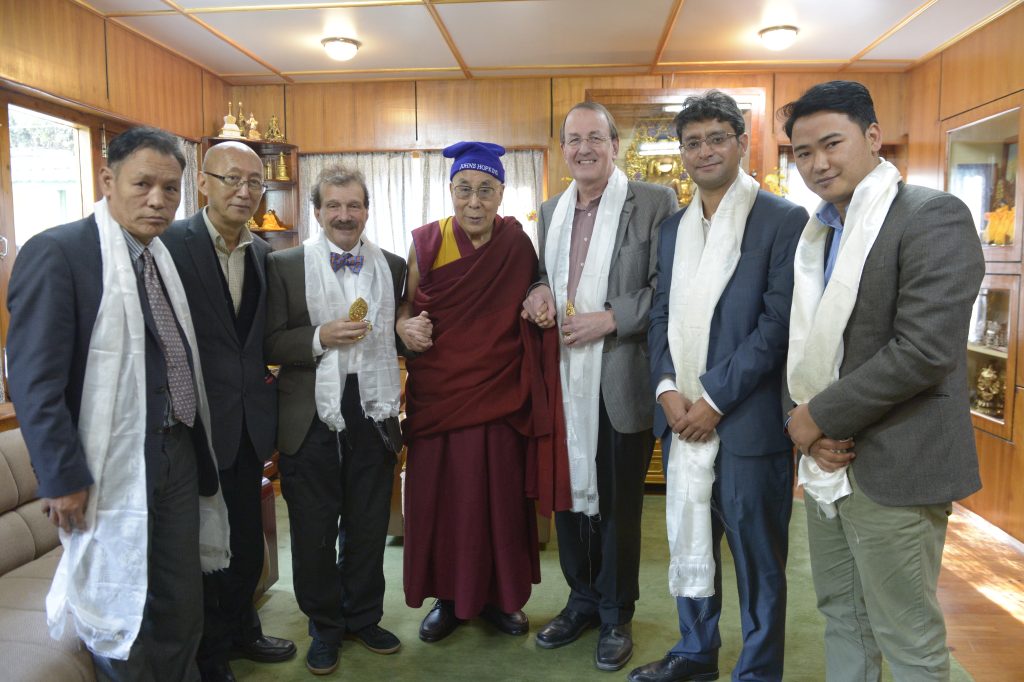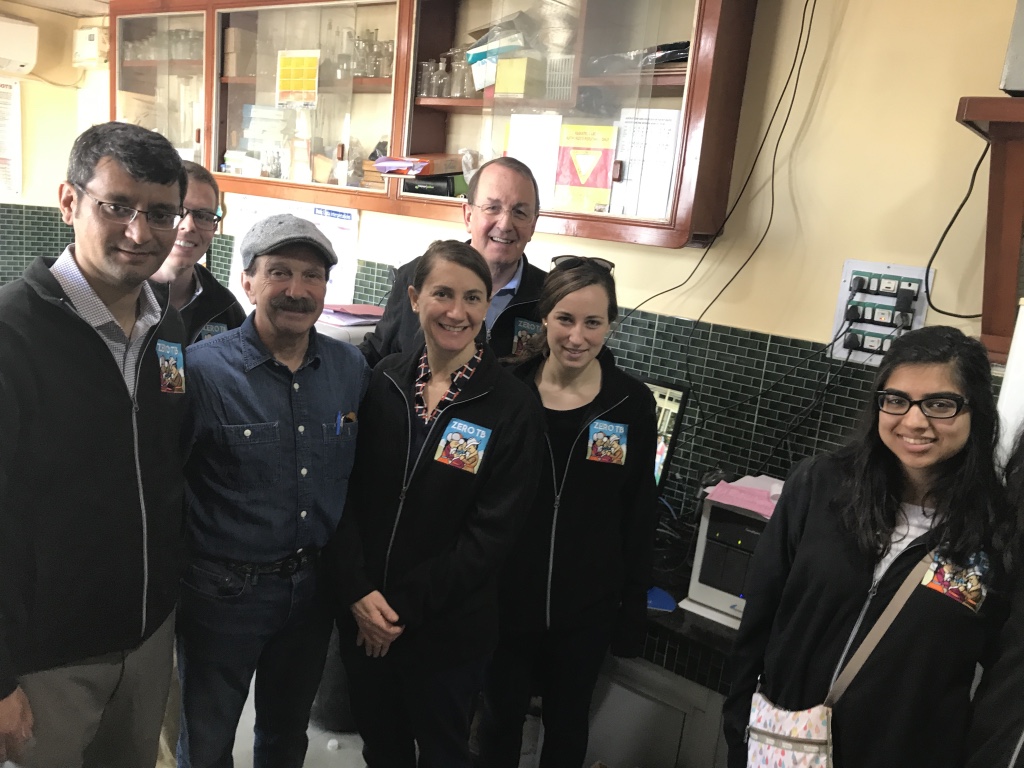
Richard Chaisson Faculty Spotlight
“There are literally billions of people in the world who are infected with TB already and are at risk of getting sick with it in the future. It’s a problem that will stick around for a long time to come, even if we developed the most perfect tools imaginable.”
A perfect vaccine. A perfect treatment. A perfect preventive program. Dr. Richard Chaisson, Professor of Medicine, Epidemiology, and International Health and Director of the Johns Hopkins University Center for Tuberculosis Research, notes that even with these, tuberculosis is going to be a challenge for years to come. Total elimination is a fantasy, especially within the next few years, he says. The key right now is to reduce the burden so that it’s not a public health catastrophe.
“We set goals in public health as aspirations, but we have to avoid delusional goals. Everyone would love to wave a magic wand and make it go away, but that just isn’t going to happen. Our goal is to make it much less worse than it is,” Chaisson said. “I would like our work to help reach the point where TB is no longer a leading infectious cause of death in the world, where millions don’t suffer every year, and TB no longer bankrupts families that lose their breadwinners to the disease. That would be a great step forward.”
“There needs to be investment by governments, by the private sector, and by international partners to realize these goals, if not by 2025, then within our lifetime. Right now, about 40 percent of TB in the world, and a large proportion of the TB in India, isn’t properly diagnosed or treated,” Chaisson said. “India has many challenges in its healthcare system and there’s a need for operational research to try to help clinical programs operate more effectively. How do we get the healthcare system to be more effective in finding the people who have TB and getting them the proper treatment? That’s a problem for India and for the world.”
“Once we have new technologies such as new diagnostic tests and drugs, those have to be delivered. How do we deploy these new technologies? That requires improving the system to make it more efficient and effective. We also need better treatments that are more effective and easier to take,” he explained. “That’s certainly true for India, because the major cost of TB programs globally is treating people who have TB for many months. The shorter we can get that, the less investment is required in running programs to care for hundreds of thousands of patients.”
The Zero TB in Tibetan Kids Project

Since 2008, Chaisson has been working with the Tibetan refugee population in India, where children are five times as likely as Indian children to be diagnosed with TB. To combat this, he and his colleague Kunchok Dorjee, MBBS, PhD, developed a program, Zero TB, that aims to strengthen the Tibetan refugee health care system and reduce the burden of tuberculosis in the population, particularly in children.
“Tibetan refugees in India have had high rates of tuberculosis for the last 50 to 60 years, and they haven’t had a governmental program that’s been able to adequately address it until we established the program with them,” Chaisson said. “The major impact of our program has been that we’ve greatly reduced drug resistant tuberculosis, and we’ve reduced the rates of tuberculosis in school children by almost 90% in the last four years, despite the COVID-19 pandemic. We’ve accomplished this by working with the schools, with the government in exile, with the community, with religious leaders, and with the Tibetan hospitals.”
Chaisson notes that most Tibetan children attend boarding schools that, while providing them with a great education and nutrition, are also prime environments for transmitting respiratory infections like TB. Congregant living facilities, poor ventilation, and the weather all play a part.
“We introduced a program where we screened and treated the children who have TB. We also screened children who have been infected with TB, but aren’t sick from the disease yet, and we give them preventive treatment,” he said. “We haven’t reduced it quite as much in the adult population because it’s a slower process, and children are a unique population when it comes to TB.”
He explained that many people who have TB could have been infected decades before and only get sick because of something that suppresses the immune system, like cancer treatment, diabetes, or HIV. Because TB infection in children is relatively recent, intervention make a bigger difference.
“One important part of our work has been the participation of the His Holiness the Dalai Lama in our project. He’s given it his blessing and endorsement and even made videos for us to take to the schools and play. He tells the children how important it is to get the TB testing and take their treatment if they need it. That’s just been an extraordinary experience,” Chaisson said. “We’ve accomplished a lot with children and that’s very gratifying, and we’d love to see the same kind of impact on adults, but it just will take a lot longer.”
“The most challenging part is that things don’t happen very quickly with TB, it’s a very slow-moving bug and everything with TB moves slowly. If you try to grow it in the laboratory, it takes a couple of weeks, as opposed to growing other bacteria, where it takes a day. It’s also slow to treat it right now. The standard treatment is six months, and we don’t have any other infection we treat for six months, with some fairly unusual exceptions,” he said. “If you get pneumonia, you get treated in less than a week. If you get a bladder infection, you get treated in two to three days. With COVID, treatment is now 5 days. It’s not six months, so when you’re doing a study of new treatments, if the standard treatment takes six months, a study takes years.”
“If you get to work with great people on something that matters, where you could make a REAL difference, what more could you want?”

Dr. Chaisson’s most recent project is Supporting, Mobilizing and Accelerating Research for Tuberculosis Elimination (SMART4TB), a international collaboration between a Johns Hopkins and several other partners, including YRG Care in Chennai, and funded by USAID. With a $200 million award, this project has multiple areas, ranging from TB diagnostic tests to new treatments and preventions, operational research, and vaccine acceptance, led by BSPH faculty member Rupali Limaye.
“USAID wanted us to focus on the factors that will influence uptake of a new vaccine when one becomes available. We’re using the COVID experience and the HPV vaccine and other vaccines that have been introduced in recent years to see what the challenges and barriers are,” he said. “We won’t have rapid answers and I think the experience that we’ve had with COVID was of a very fast-moving epidemic where we got answers pretty quickly. We had diagnostic tests within a couple of months, home tests within six months, and a vaccine in less than a year. That’s just extraordinary, and that has to do with the pace of the disease. We can see if COVID treatment works in a couple of months, but we can’t do that with TB.
Because SMART4TB us a comprehensive program across a wide array of areas, his team, led by Bob Bollinger and Andy Ruff, is also doing capacity strengthening, creating a group of young investigators who can carry on the work of its years-long goals. They have another team focusing on policy and advocacy with government and policy-setting bodies like the WHO, attempting to take the research and make changes at both the local and global levels and the local level.
Having these team collaborations and colleagues is a major part of why Chaisson loves his work. “I work with great, very dedicated people, and we work on something that is really important to the world. If you get to work on something that matters, with great people, and where you can make a difference for the world, what more could you want?”